Every summer is special in its own way. But in particular, the one where you finally get to travel and roam freely almost anywhere, after spending so much time indoors due to the pandemic. So even though everyone around me longed to travel again, I had the complete opposite desire, to pack my bags and head to the Lithuanian seaside. More precisely, to Nida.
Destinations like Spain, Italy and France are all fabulous, yet nothing beats Nida if you ask me. It’s a resort town tucked away on the Curonian Spit, just an hour and a half car drive from Klaipėda, including a short ferry ride.
Over the years, dozens of new places opened, and various infrastructural developments took place in Nida. All this as a result of increasing numbers of local and foreign visitors. It’s no secret that I’m among them as this Curonian gem charms me away with every visit.
There’s something so magnetic about how serene and unpolished the place is, so I’ve decided to put a short guide for your next visit, especially if it’s your first time in Nida.
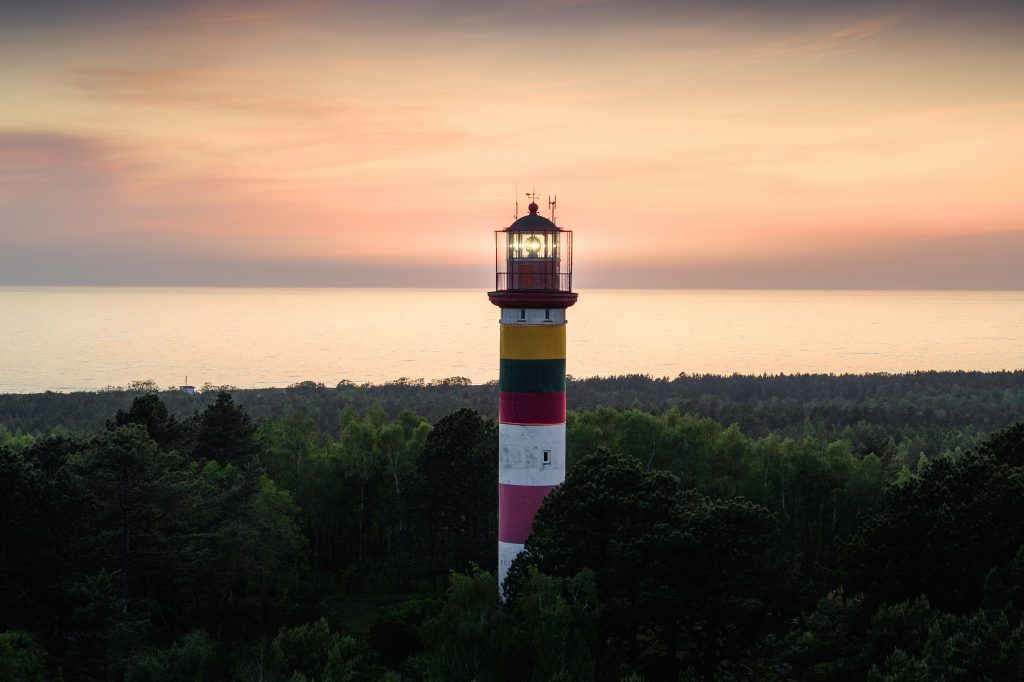
History of Nida
Neringa is a municipality, joining all settlements situated on the Curonian Spit, including Juodkrantė, Pervalka, Preila and Nida. All of them are stretched along a thin, 98 km-long peninsula known as the Curonian Spit. With half of the length being on the Lithuanian side, Nida’s harbour is situated only a bit more than 3 km from the Russian border. Nida has been recognized as a UNESCO World Heritage Site since 2000.
The spit itself separates the Curonian Lagoon from the Baltic Sea coast, and the first inhabitation in the area started around the XIII century. The name is associated with the western Baltic tribe called Curonians, residing in the coastal part of the present-day part of Latvia and Northern Lithuania. With that said, there were many cultural influences in this region throughout the time, including German, Russian, and more.
Fishing was cultivated as the main Curonian livelihood since the surrounding nature was scarce. Being almost separated from the mainland had also made an impact on distinctive local architecture, like reed-covered buildings, specific sailing boats called kurėnai, as well as ascetic lifestyle.
With over 2,300 inhabitants, today’s Nida is different. The Curonian town invites visitors to resort in a tranquil, soulful and unique place. Where one can choose not only to tan at a beautiful beach or take sunset walks along the lagoon, but it is also surrounded by its most impressive element—Parnidis Dune.
Where to eat and stay in Nida
Nature elements are not the only thing that stands out in Nida. The town also hosts a number of restaurants worth experiencing. Some of my favourite ones are Bo House, with its stunning shore-front location; Mexican-inspired Sofa de Pancho and Pušyne, offering a wide selection of delicious grilled dishes.
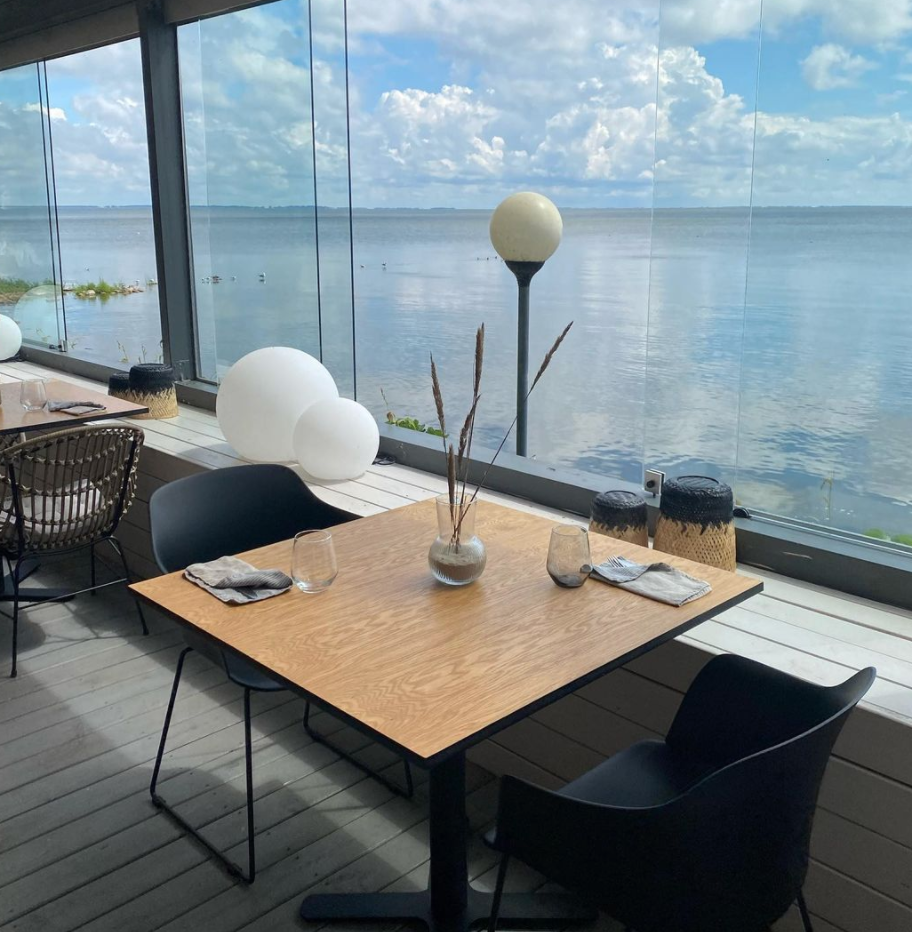
Bo House 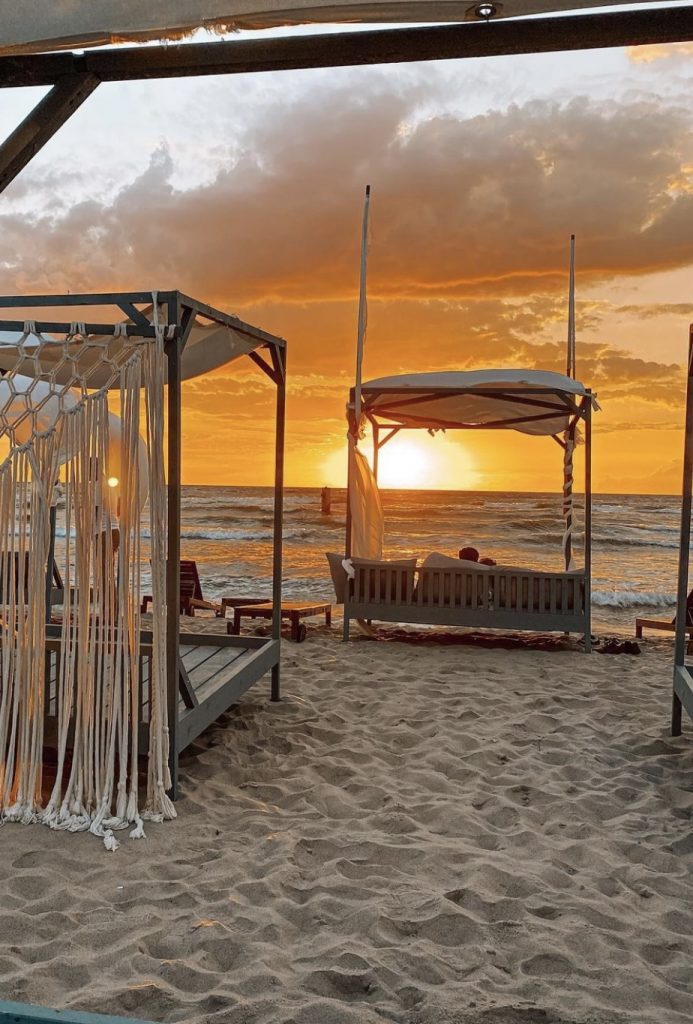
Kupolas 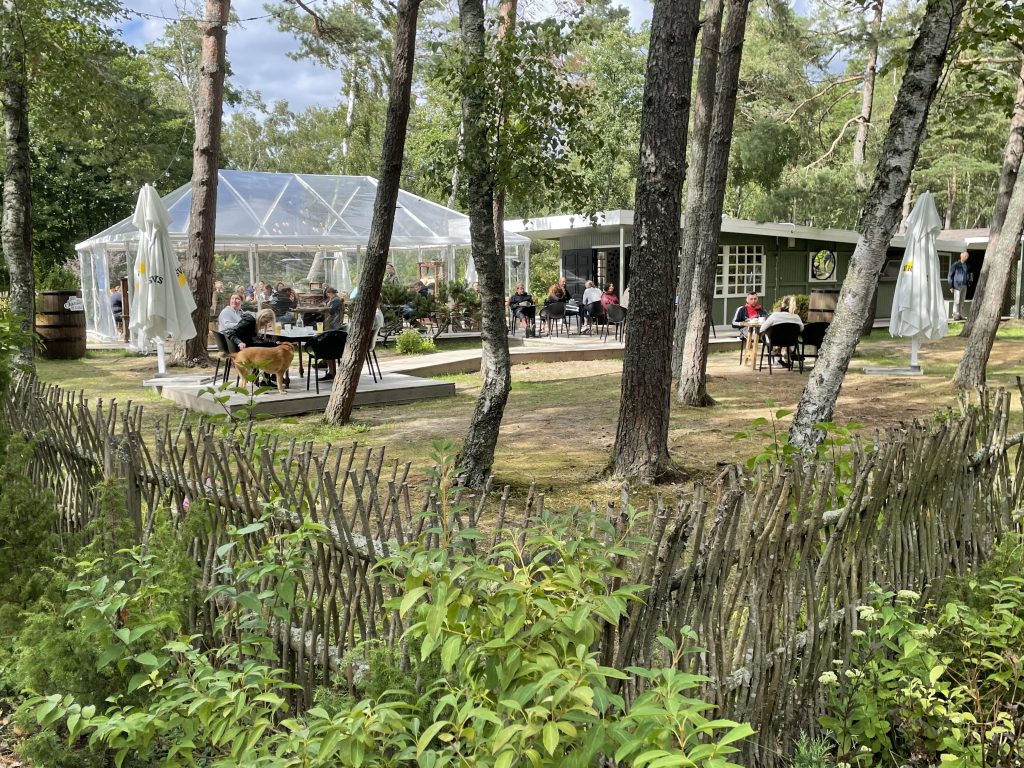
Pušyne 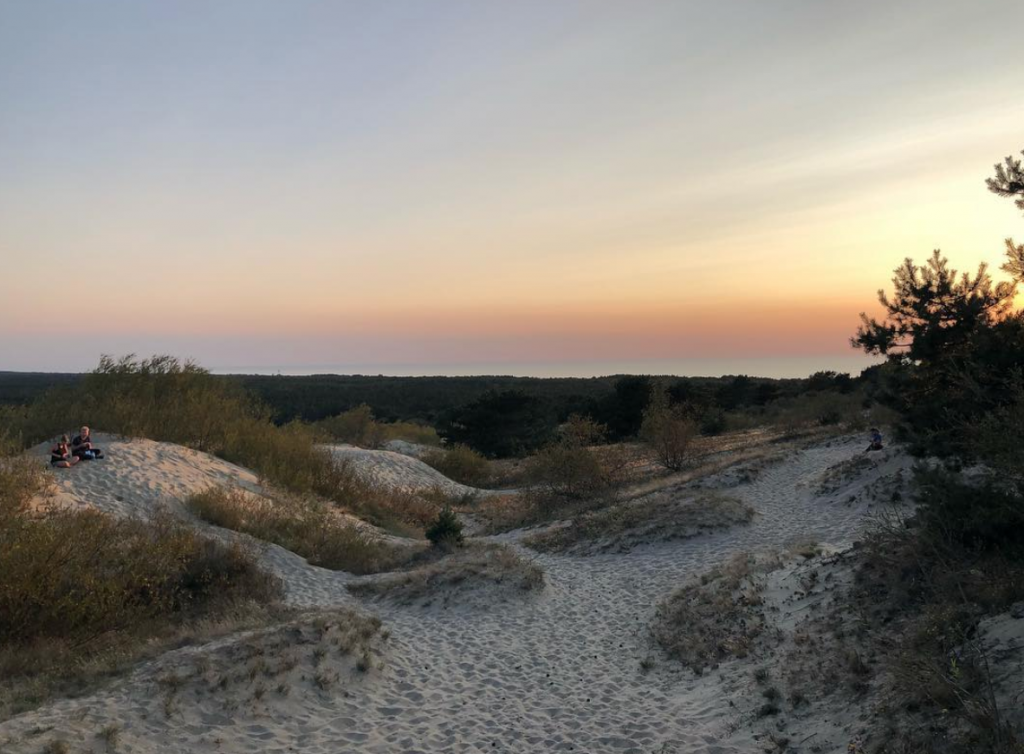
As for drinks and coffee, you can grab a cocktail or a beer at a newly-renovated harbour that in the evening time, has a dozen bars located outside. Their vibe reminds me of Berlin or Copenhagen areas like the Meatpacking district, just a smaller and a cuter version. I also enjoy the beach bar Kupolas a few steps away from the sea. There you can order a tasty Aperol Spritz during your tanning session or attend one of its iconic late-night parties.
When it comes to coffee, Vero Cafe, Brew and Caffeine are doing a good job as per usual. And yet, I found that a café with a cosy seating area located indoors, serving high-quality brew was missing. In case I’ve missed one, let me know in the comments below or drop me a message.
For those who like spontaneous trips, Nida might be an exception. Since the resort town is rather small, the options of accommodation are limited too. My advice is to book a place to stay in Nida well in advance, like in February or March.
This time I stayed at Nidos Banga and Nidos Gaiva. With more time to plan, I would have booked an apartment or even stayed a little outside of town, like in Preila or Juodkrantė, which is only a 10-15 minute drive by car.
Places to see in Nida
There is a fair amount of things to do in Nida, but let’s start with the pride of the Curonian Spit—sand dunes. They were formed by the wind blowing dried sand, and they are moving and slightly changing the location up to this day. Currently, the Dune of Parnidis is at the height of 52 meters above sea level.
One way to admire its beauty and vastness is by taking a set of stairs all the way up to the observation deck. But that’s not all. From up there, you get to explore a 13,8-meter tall rock-solid sundial and the wide panorama of Nida’s surroundings. You also get to see the old lighthouse, which shows the way for fishers sailing for more than 130 years.

Another way to admire the dune is from a boat. You can join a tourist ride from the harbour, and the dune looks especially stunning during a sunset trip. Plus, you get to see an angle of it that is not visible from the land.
Whether it’s a jog or bicycle ride, you should make the most out of the sandy beach that spans the entire seashore of the peninsula. For a rainy day, visit one of the many Nida museums. You have several options here, with some of the most popular—Nida Fisherman’s Ethnographic Homestead, Curonian Spit History Museum, and Thomas Mann Museum.
That’s all for now. See you next summer in Nida 😉
P.S. Thank you, Mantas, for complimenting the post with these stunning photos. For more of his work, visit his Instagram or website https://www.epicshot.lt/.


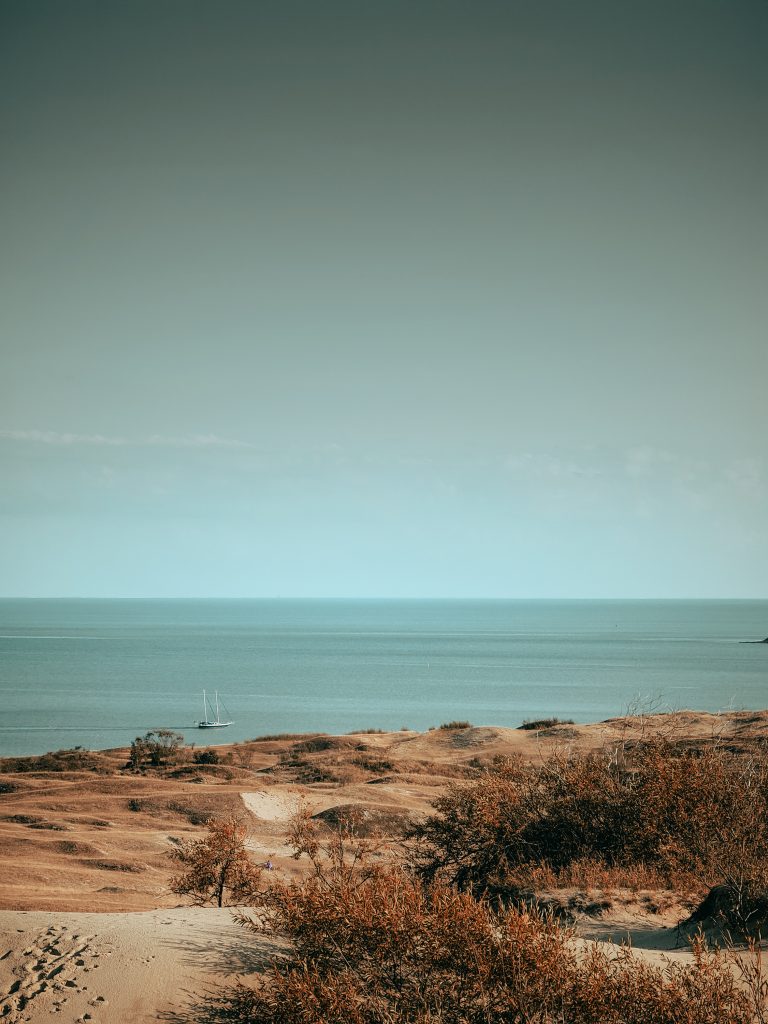
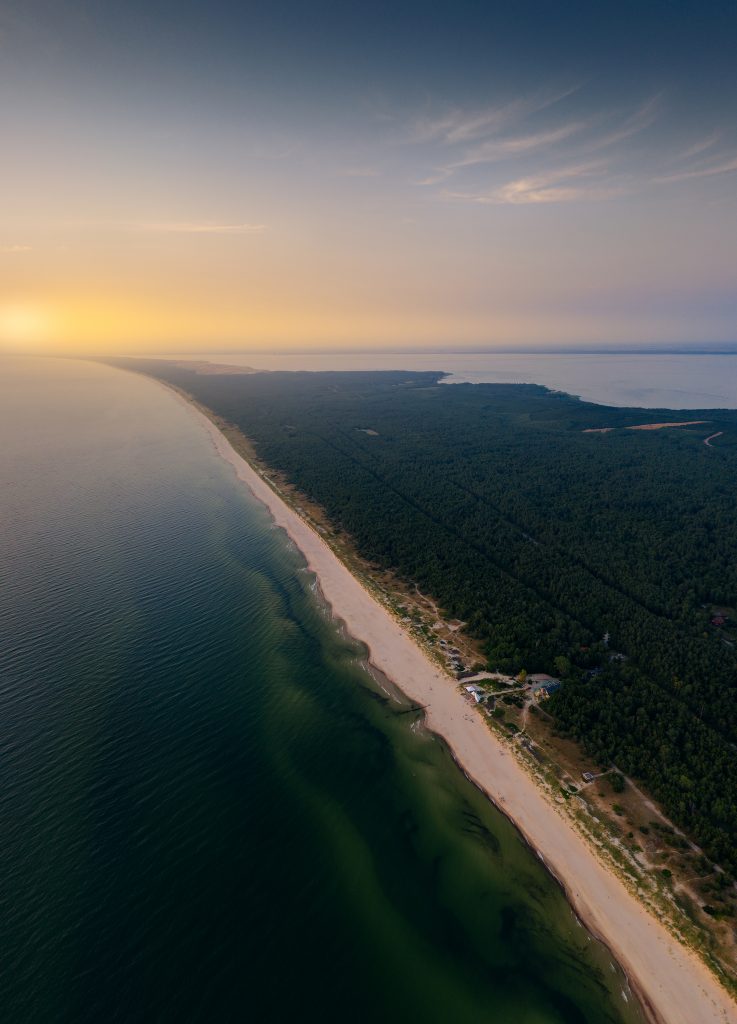

 (6 votes, average: 4.50 out of 5)
(6 votes, average: 4.50 out of 5)


